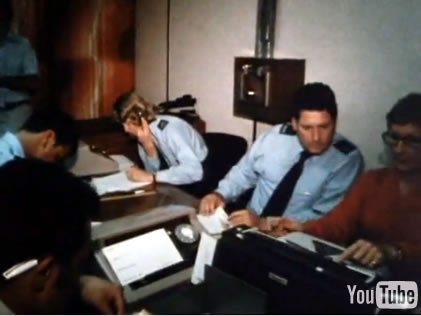
Police operations on the night of the Erebus disaster.
Operation Overdue in New Zealand - initial steps
As those involved in the recovery operation headed to Antarctica in the immediate aftermath of the Erebus disaster, work was also under way in New Zealand to help identify the victims they recovered. The victim identification phase of Operation Overdue was headed by Chief Inspector Jim Morgan of the Disaster Victim Identification (DVI) team. Morgan's team included fellow members of the DVI unit, other police, pathologists, dentists, funeral directors and embalmers, and representatives of Air New Zealand (to assist in the identification of the cabin and flight crew).
In the hours immediately after the crash, but before its fate was known, New Zealand police confirmed the passenger list and (with the assistance of Interpol) notified next of kin that the flight was overdue. They also gathered various details about the passengers. Once the crash was confirmed, the police obtained as much personal information as they could for the purposes of identification. As well as asking doctors and dentists for patients’ records, they asked friends and family about items of jewellery, clothing or property victims might have been wearing or carrying. They also collected fingerprints from objects in the victims' homes, and from cars and luggage left at the airport and hotels.
On 2 December 1979, as the police continued with their inquiries, key members of the victim identification phase met to discuss procedures for the arrival of the first bodies. These would be brought to Auckland, both because many of the passengers were from that area and because the University of Auckland’s mortuary was the only one in the country large enough to accommodate the number of bodies expected. Aircraft would land at the Royal New Zealand Air Force's base at Whenuapai. The base would be closed, and there would be no ceremony on arrival.
On 6 December the first flight arrived at Whenuapai. The RNZAF C-130 backed into an aircraft hangar and, out of sight of reporters and photographers, the 114 bodies were placed in ambulances for transportation to the mortuary. Another flight arrived on 11 December. This time, because of the numbers involved, the bodies, remains and personal belongings were transported in refrigerated trucks.
Part of: Operation Overdue
Next page: Post-Mortems and Victim Identification

Community contributions